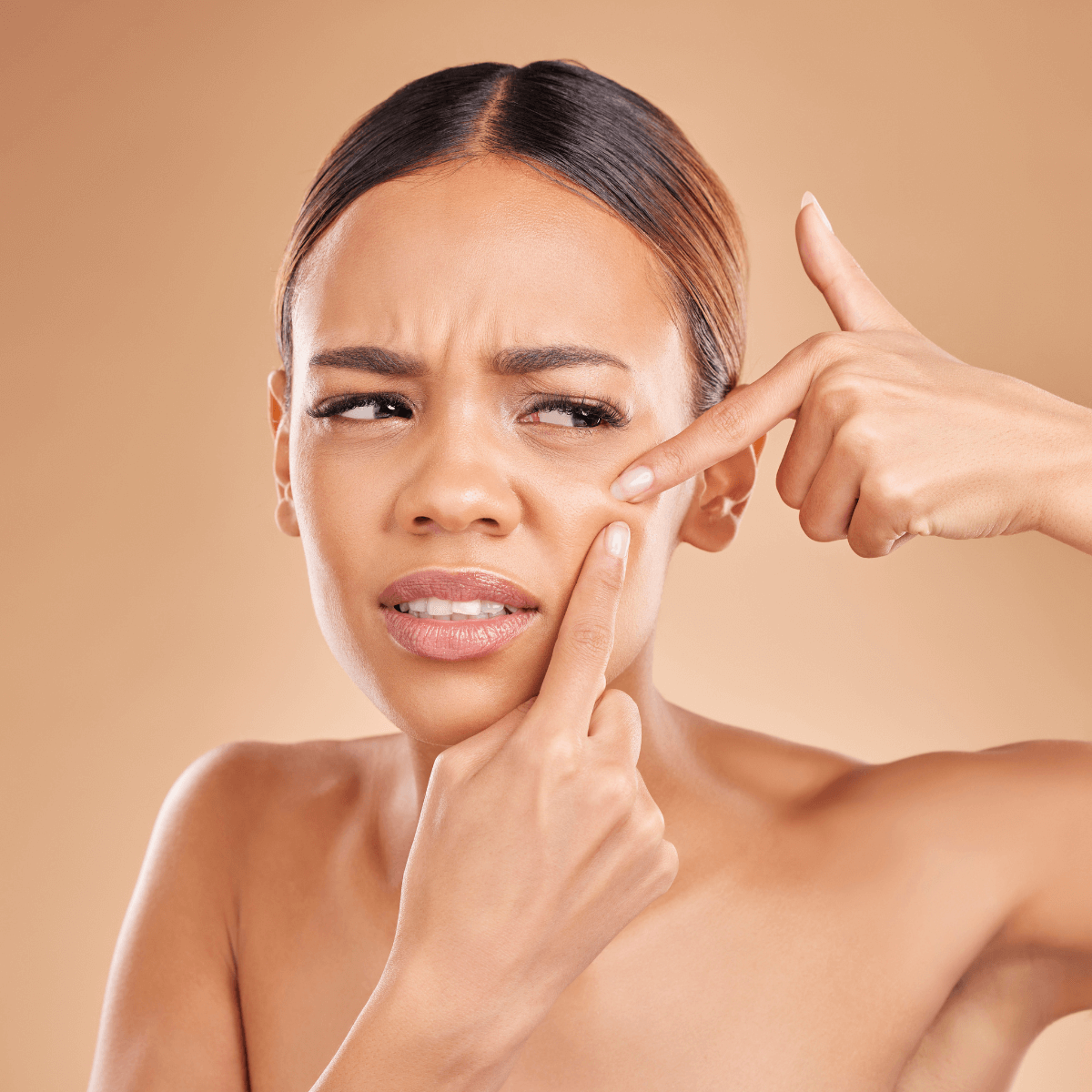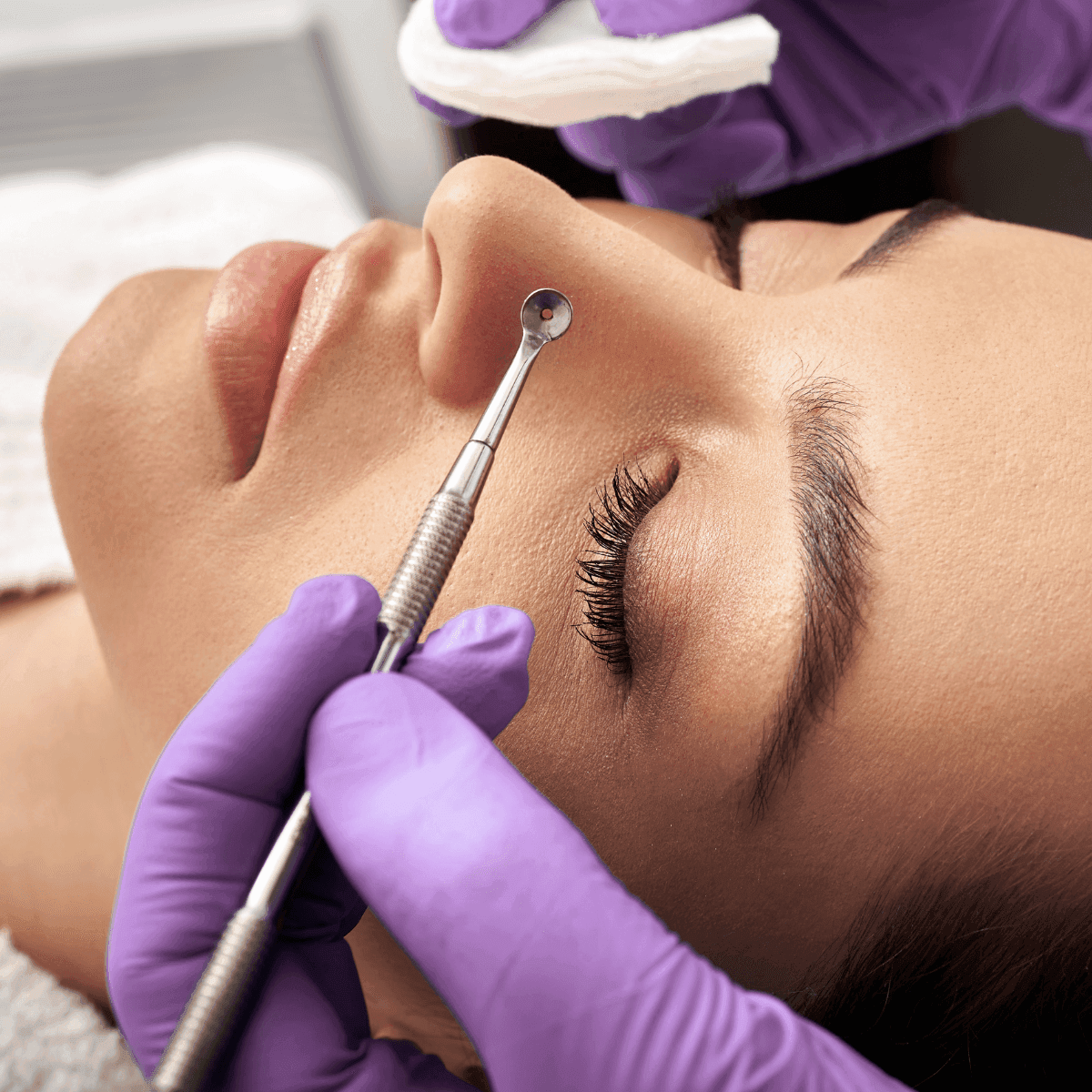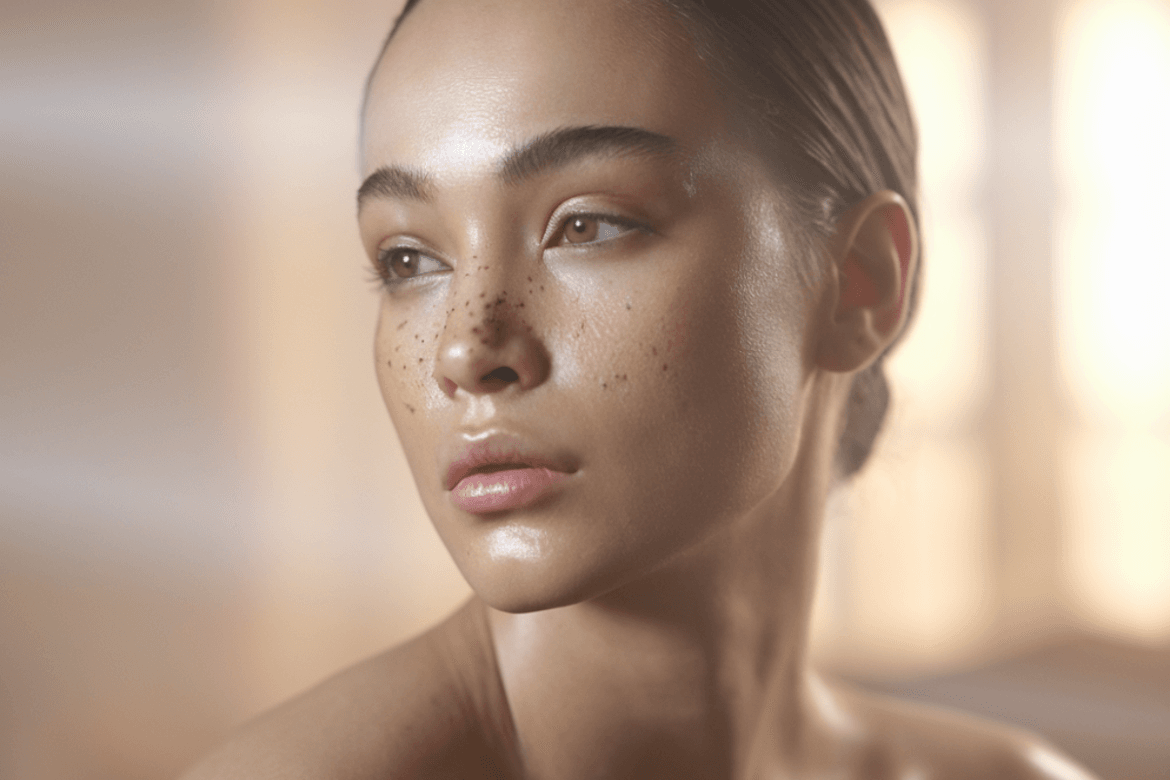Truth is, no one wakes up excited about finding blackheads or whiteheads staring back at them in the mirror. These little troublemakers might seem small, but they can make a big impact on how you feel about your skin. Don’t worry, though – we’re breaking down everything you need to know about these pesky pore problems, from what they are to how you can kick them to the curb. Ready? Let’s dive in!
Contents
What Are Blackheads?
Blackheads are like the extroverts of the acne world – they’re out there for everyone to see. These tiny, dark spots form when your pores get clogged with oil, dead skin cells, and other gunk. The difference between a blackhead and, say, a whitehead, is that the pore remains open. This exposure to air causes the debris inside to oxidize, turning it black (hence the name).
Blackheads love to pop up in areas where your skin is naturally oilier, like your nose, chin, and forehead. They’re not exactly painful, but they can make your skin look uneven and textured. Plus, they tend to accumulate in clusters, making them extra annoying to deal with.
What Are Whiteheads?
If blackheads are the extroverts, whiteheads are the shy introverts – they stay hidden beneath the skin. Whiteheads are closed comedones, meaning the pore is sealed shut. This creates a little white bump, often surrounded by inflammation. Unlike blackheads, whiteheads don’t oxidize because they aren’t exposed to air.
These bumps can appear anywhere on your face but are most common on your cheeks, chin, and around the nose. They might be small, but they can feel tender and even painful, especially if they get irritated.

Key Differences Between Blackheads and Whiteheads
Not all clogged pores are created equal! Here’s a quick breakdown to keep things clear:
- Appearance: Blackheads are open and dark, while whiteheads are closed and white or skin-colored.
- Location: Both can appear on the face, but blackheads often show up in oilier zones, while whiteheads can pop up just about anywhere.
- Texture: Blackheads tend to feel rough or bumpy, while whiteheads are smoother but raised.
Understanding these differences is step one in your journey to clearer skin.
How to Treat Blackheads
The secret recipe to getting rid of blackheads: patience and the right approach. Skip the temptation to squeeze them out yourself – this can stretch your pores and lead to scarring. Instead, try these proven strategies:
At-home Treatments
- Salicylic Acid Cleansers: This ingredient is a pro at diving deep into pores to dissolve oil and debris. Use a gentle cleanser with salicylic acid daily for visible results over time.
- Clay Masks: Think of clay as a magnet for dirt and oil. A weekly clay mask can help absorb excess sebum and clear out stubborn blackheads.
- Retinoids: Retinoids are like personal trainers for your skin cells, encouraging them to shed properly and preventing clogs in the first place. Start slow to avoid irritation.
Professional Treatments
- Chemical Peels: A chemical peel can exfoliate multiple layers of dead skin cells, revealing a smoother, clearer complexion.
- Microdermabrasion: This treatment gently buffs away dead skin and impurities, making blackheads less likely to form.
- Extractions: Sometimes, it’s best to leave it to the pros. A trained esthetician can safely extract blackheads without causing damage.
How to Treat Whiteheads
Treating whiteheads requires a slightly different approach since they’re sealed off from the air. Here’s how to handle them:
At-home Treatments
- Benzoyl Peroxide: This ingredient is fantastic for targeting bacteria and reducing inflammation. Use it as a spot treatment or in a gentle wash.
- Hydrocolloid Patches: These tiny, sticky patches suck out impurities and help protect the area from further irritation. Plus, they’re oddly satisfying to use!
- Non-Comedogenic Moisturizers: Whiteheads can worsen if your skin is dry or irritated. Keep your skin hydrated with a lightweight, oil-free moisturizer.
Professional Treatments
- Light Chemical Peels: These are gentle enough to target whiteheads without aggravating sensitive skin.
- Prescription Retinoids: For stubborn whiteheads, a dermatologist might prescribe a stronger retinoid to clear up your skin.

Prevention Tips for Both Blackheads and Whiteheads
Prevention is always better than cure – especially when it comes to clogged pores. Here’s how to keep your skin smooth and bump-free:
- Cleanse Daily: Wash your face twice a day with a gentle cleanser to remove oil, makeup, and debris. Overwashing, though, can strip your skin and trigger more oil production, so keep it balanced.
- Exfoliate Regularly: Exfoliating 2-3 times a week with a product that suits your skin type can help prevent dead skin cells from building up in your pores. Choose chemical exfoliants for a gentler touch.
- Stick to Non-Comedogenic Products: From foundation to sunscreen, make sure your skincare and makeup products are labeled “non-comedogenic,” meaning they won’t clog your pores.
- Hydrate Inside and Out: Drinking plenty of water and using a good moisturizer can keep your skin barrier strong and healthy.
- Manage Stress: Stress increases cortisol, which can cause your skin to produce more oil. Find ways to relax, whether it’s yoga, meditation, or simply taking a walk.
When to See a Dermatologist
Sometimes, your skin might need a little extra help. If blackheads or whiteheads persist despite your best efforts, it’s time to call in a pro. A dermatologist can offer advanced treatments like laser therapy, prescription-strength creams, or personalized skincare plans.
Additionally, if your clogged pores are accompanied by painful cystic acne, severe inflammation, or scarring, don’t wait – get professional advice ASAP.
Blackheads and whiteheads might be a common part of life, but they don’t have to stick around forever. With the right combination of treatments, prevention strategies, and a little patience, you can keep your skin clear, smooth, and glowing.
So, the next time you spot a pesky blackhead or whitehead, remember: you’ve got the knowledge (and the tools) to deal with it like a skincare pro!


